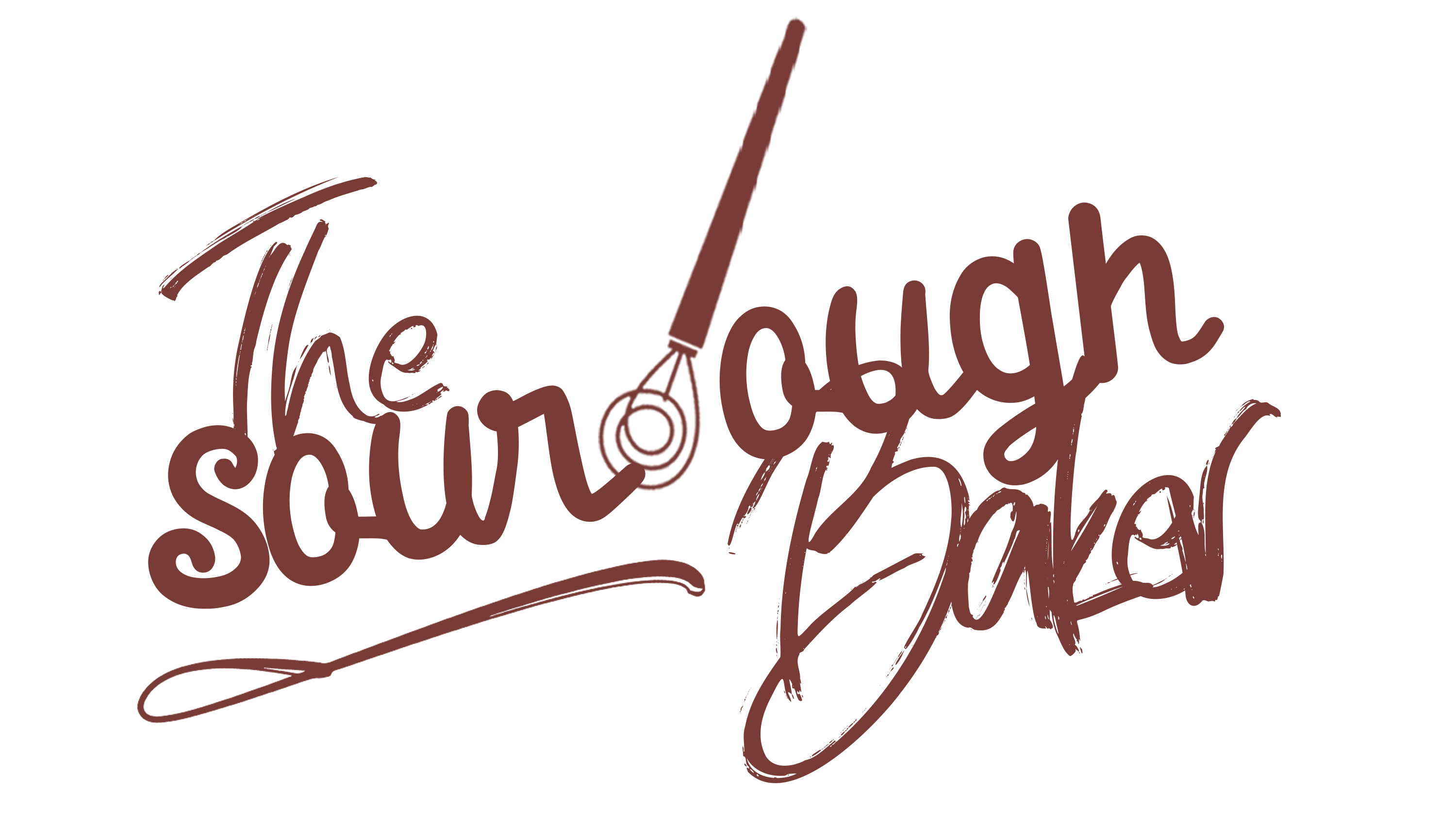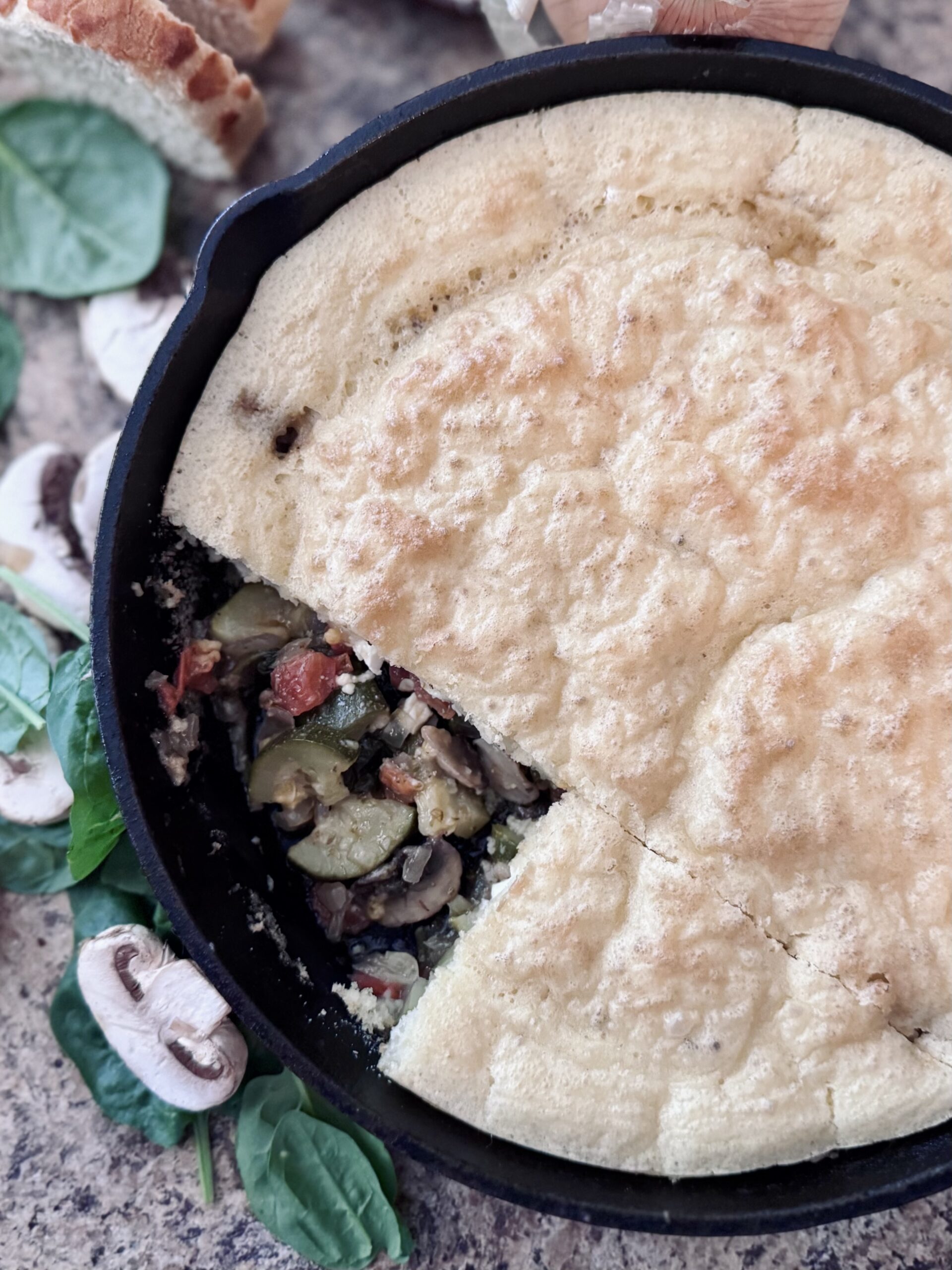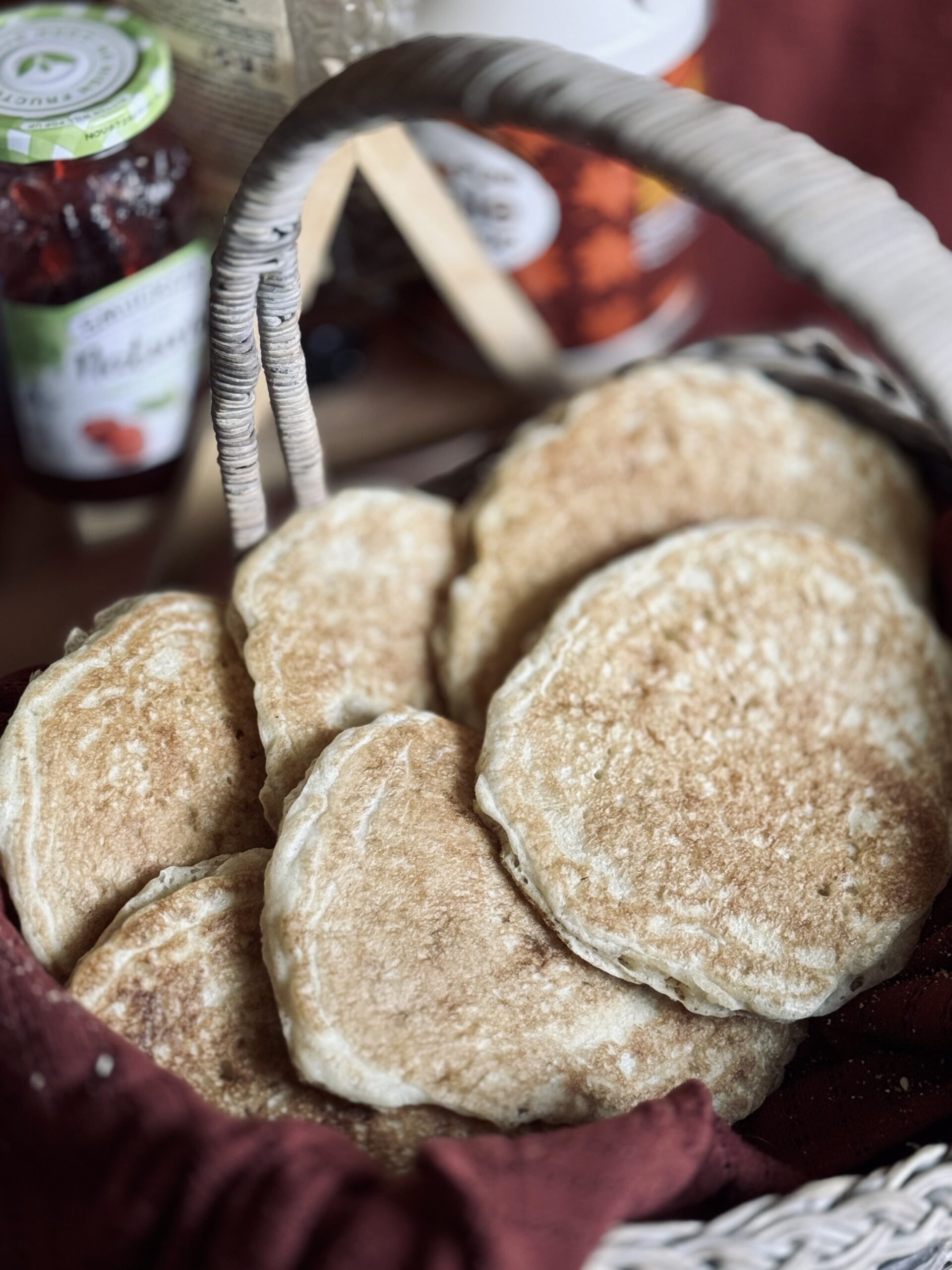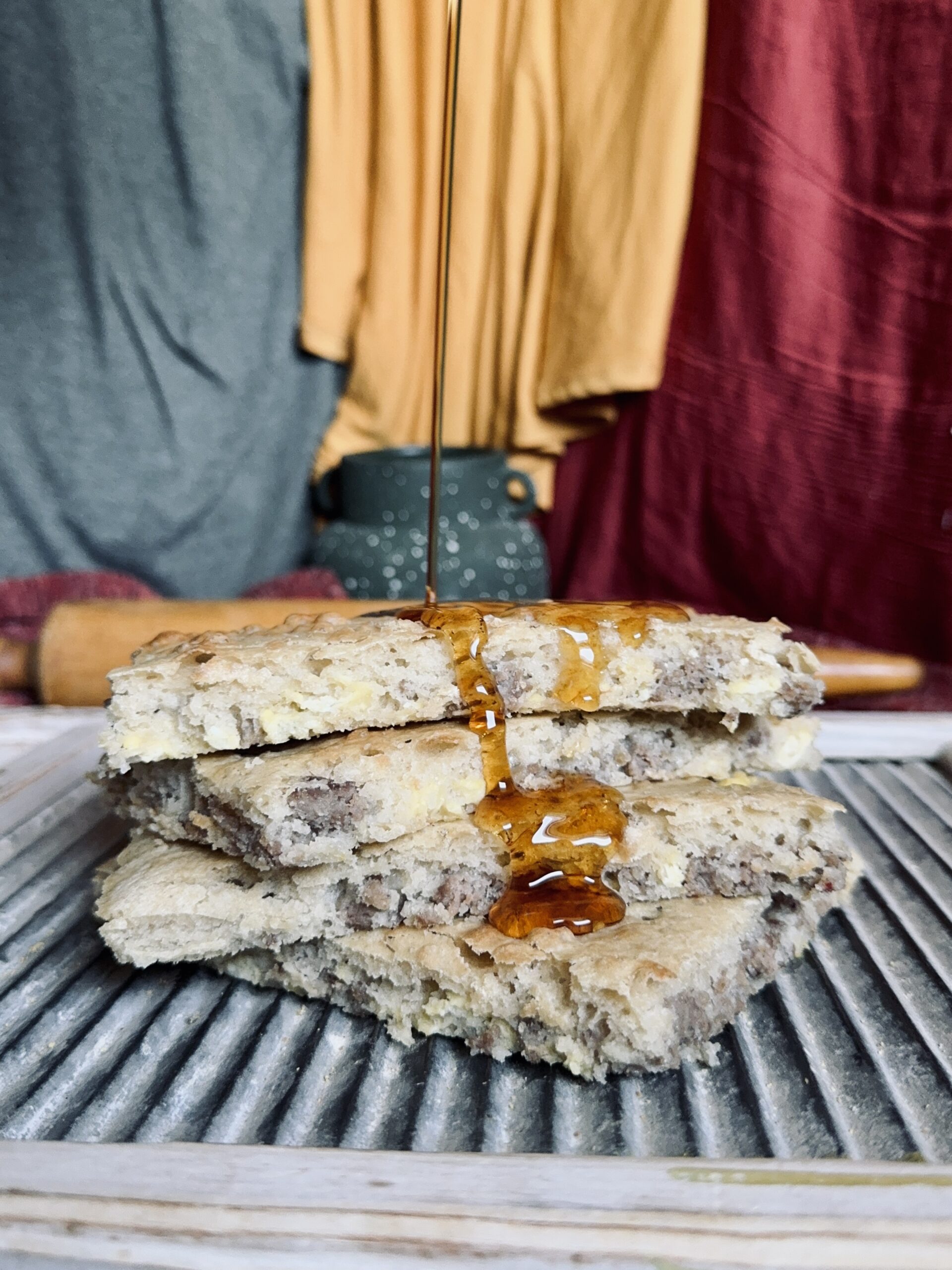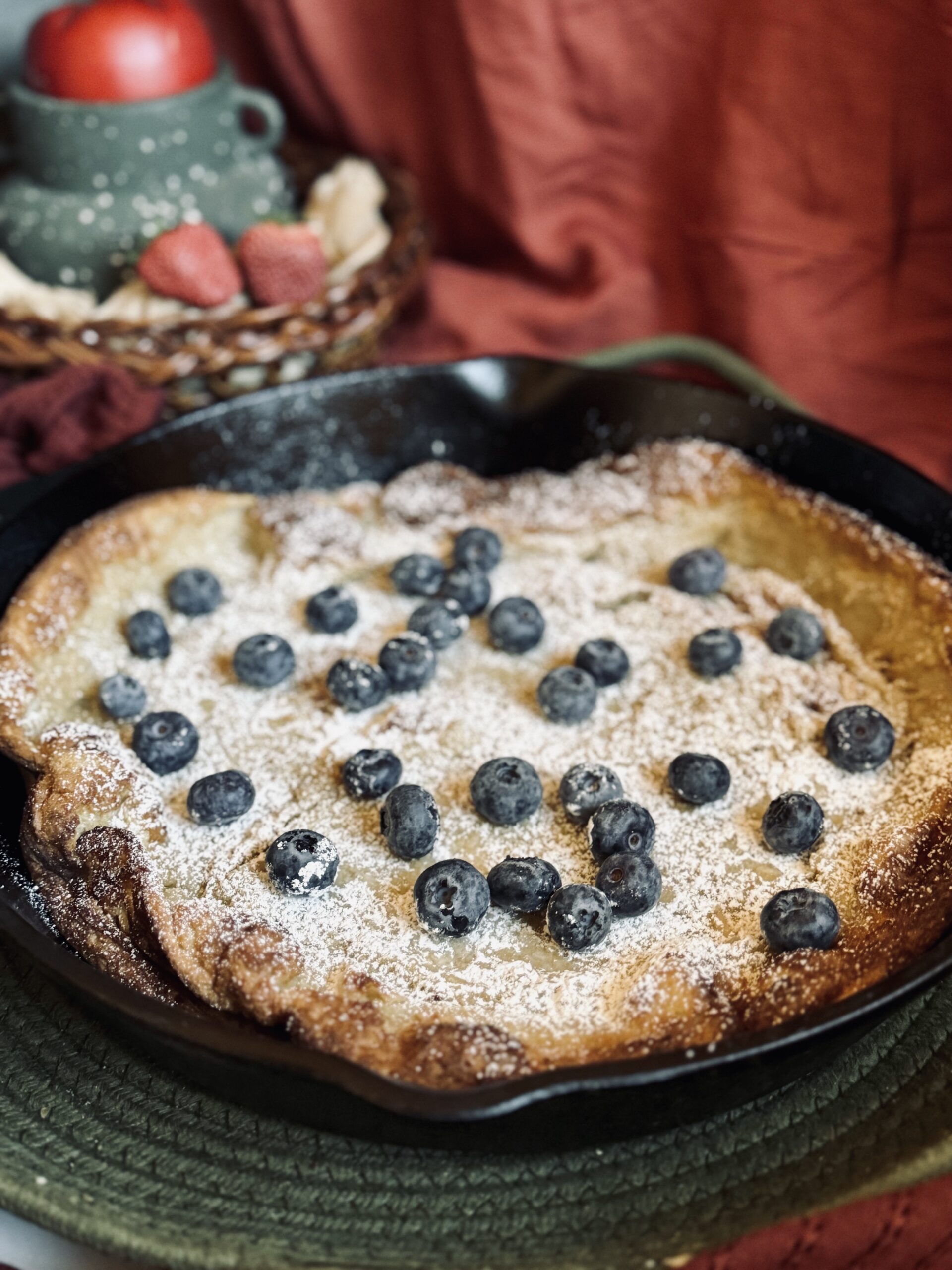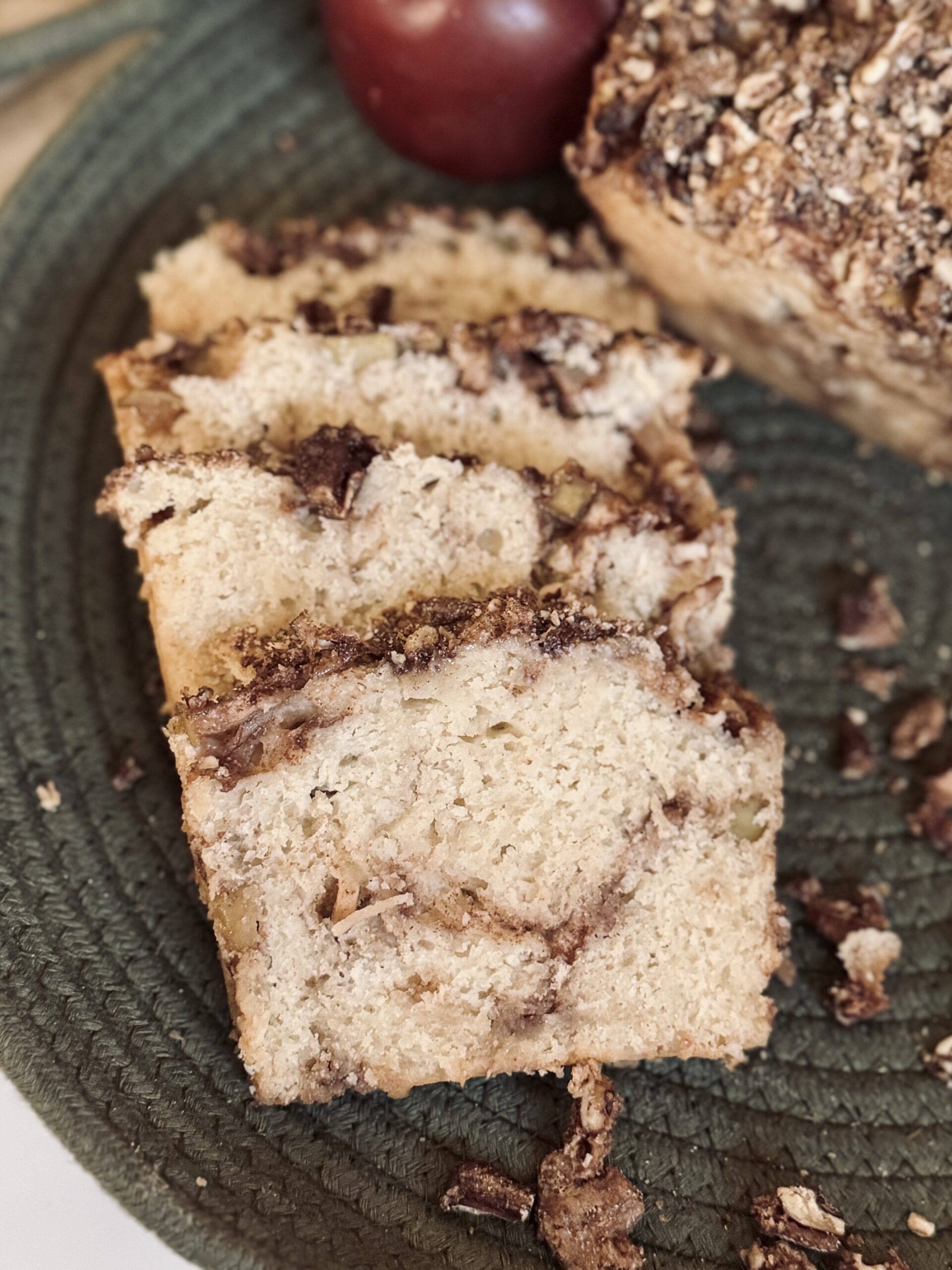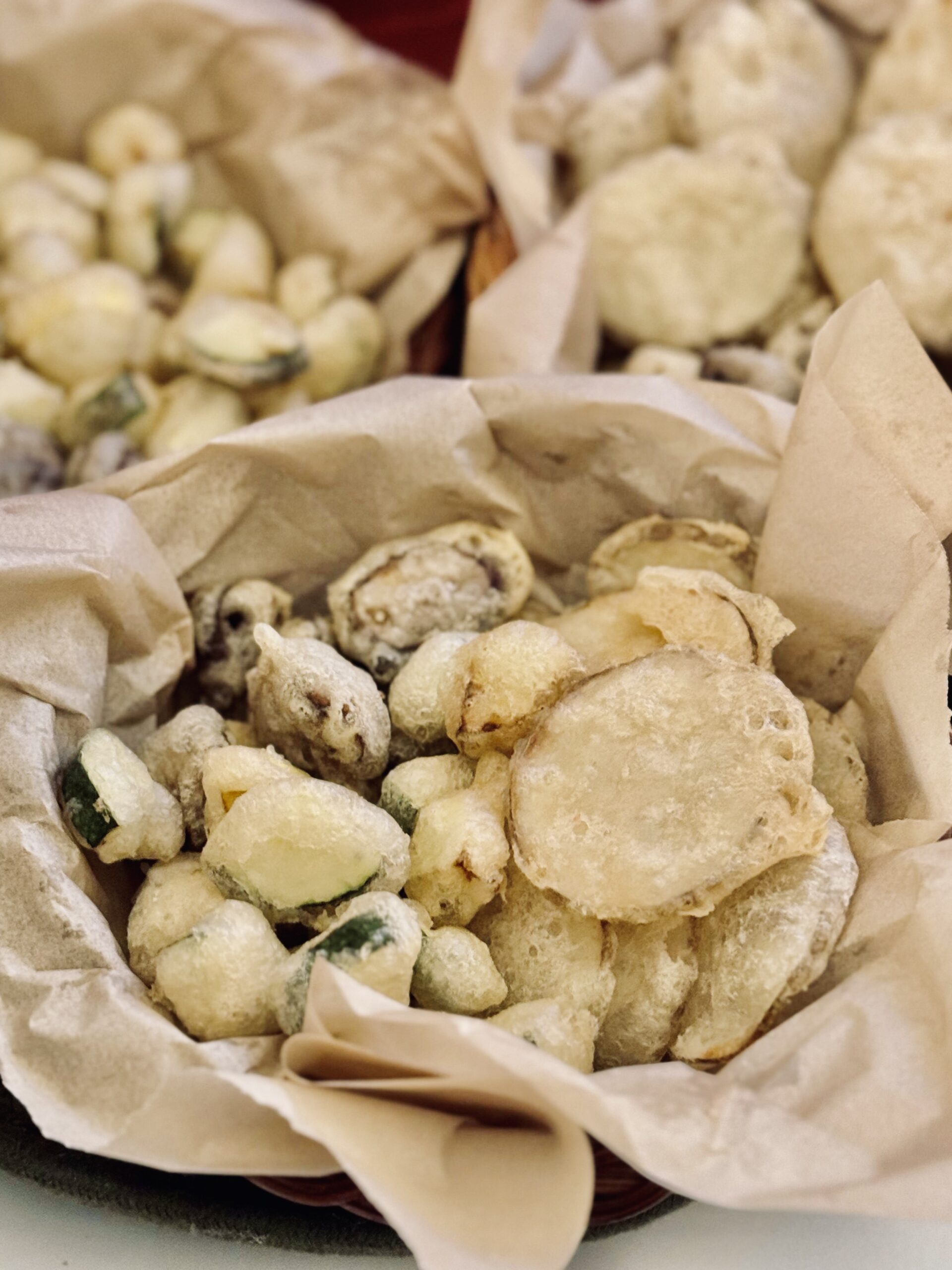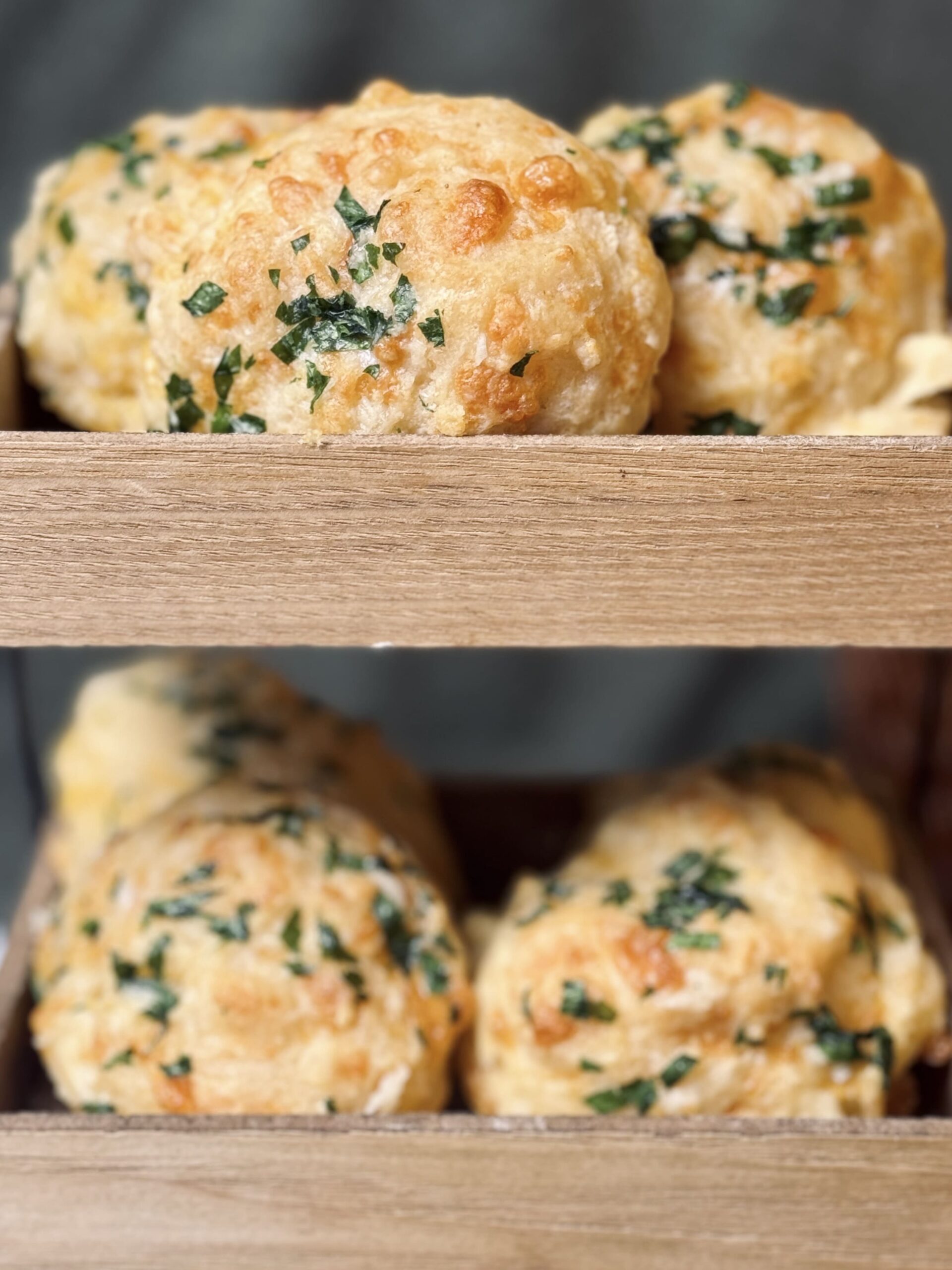About This Recipe
Crispy, fluffy, savory (and a little sweet!) – did you even know you could make corn dogs with your sourdough discard? It takes a little practice coating and frying them just right, but hopefully my tips can help you succeed.
What Is A Corn Dog?
Often enjoyed at fairs, carnivals, amusement parks, and as a convenient meal at home, corn dogs are a popular American food item consisting of a hot dog sausage coated in a thick layer of cornmeal batter and then deep-fried until golden brown. The term “corn dog” typically refers to the entire snack, including the sausage and the batter. They can be served with various condiments such as ketchup, mustard, or even mayonnaise.
What I Love About This Recipe
This recipe for corn dogs is completely unique in that it contains no unfermented wheat flour. In fact, it is probably the only recipe on the internet of its kind. This corn batter can be used as a frying batter for anything you like – not just hot dogs! You can even fry it up on its own, dropping in spoonfuls into the frying oil, to make an almost-hushpuppy (no onion!).
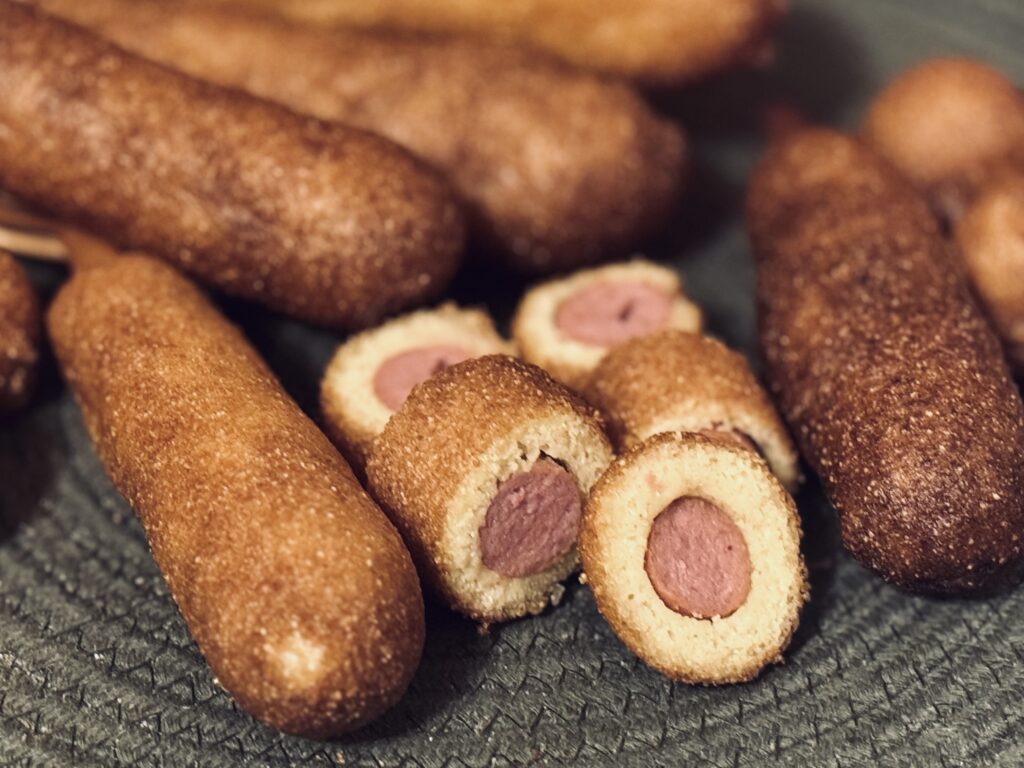
All The “Why’s”
Cornmeal
Cornmeal is what makes these corn dogs! Now, in my area, options for cornmeal are limited. I simply use a fine to medium-grind generic cornmeal – you know, the ones that are meant for baking. To be specific, I have tested this recipe using United Supermarket’s brand, Signature Select, as well as Quaker’s Yellow Cornmeal. I have not tested this recipe with corn flour or other corn flour varieties, such as masa harina. Sometimes the consistency of this batter can be a little finicky, so make sure that you watch my YouTube video to better understand what the batter should look like.
Sugar
Corn dogs are made from a sweet batter, which is the main reason why sugar is important in this recipe. But, even if you aren’t a fan of sugar, I would not recommend skipping it. Sugar promotes browning, contributing to the golden brown color of the corn dogs. This may not seem like a big deal, but let me tell you – the results can look quite different without it!
Baking Powder
This is a quick recipe, so I use baking powder, over sourdough, to leaven these corn dogs. I prefer chemical leavening for sourdough discard recipes because we are using starter that is not in its prime state, and may not leaven well. While it is true that the addition of flour feeds the yeast, and you may get a slow rise, sourdough-discard-leavened quick breads have the potential to be more sour, due to the ever populating bacteria (which are responsible for the sour flavor) and still may not rise properly.
Salt
Salt brings out flavor in any dish – and that is its exact purpose here. Don’t skip it.
Sourdough Discard
The sourdough discard in this recipe takes the place of flour and some of the milk. The main goal: to use as much as possible and still get great results. In corn dog batter, it serves as a source of moisture and as a binder that brings the dough together.
It is important to note that with this much sourdough discard, your corn dogs may or may not be sour. It all depends on your maintenance routine and the health of your starter. You can taste your discard (just a smidgen) before making this recipe – it’ll tell you what the results might look like! I have made this recipe many times and have never had a sour outcome, while others cannot even imagine making a recipe like this because their discard is so sour. Sourness comes from the bacteria in your starter. When they overpopulate, you can taste it.
Check Your Consistency
Sourdough discard can vary in thickness, depending on how long it has been sitting in the refrigerator. A thinner, runnier discard may produce a runnier batter, which is likely to slide off the hot dogs. The batter should be thick enough to coat the dogs without running off, but thin enough that the hot dogs are still easy to dip. This can be offset by using extra cornmeal to thicken the batter or extra milk to thin it out.
Milk
Milk adds moisture, just a smidgen, to balance out the sourdough discard and the cornmeal. Milk, like sugar, also contributes to browning, helping these corn dogs to have a beautiful golden brown color.
Egg
Eggs make baked (or in this case, fried) goods light and fluffy. They also add moisture, contributing to the overall balance of wet/dry to create the right consistency in the batter.
Coating The Dogs
Coating your hot dogs is definitely the hardest part. If the consistency of your batter is not quite right (too thick or thin), things will be quite difficult. Besides that, here are a few things that can help:
Cold Batter
I make the batter first and refrigerate it before I do anything else (including heating the oil or preparing the hot dogs). This gives the batter a chance to chill in the refrigerator, which will help it stick to the hot dogs better. (Seriously, it makes a huge difference!) It is best to chill the batter for at least thirty minutes, but I have made this batter up to three hours in advance without issue. If your baking powder is double acting, I do not see why you couldn’t go even longer – up to twelve hours.
Drying The Hot Dogs
Wet hot dogs mean extra moisture, which can cause the batter to slip right off. This means we have to dry the dogs as best as possible. I pat them dry with a paper towel, as well as lay them out to air-dry while the oil is frying. You can also coat them in cornmeal or extra flour to help the batter stick.
Frying
You can use any preferred frying oil to fry these corn dogs. I’ve found 350 F (175 C) is the perfect temperature for cooking the batter all the way through without burning the outside. Any lower, and the corn dogs would absorb too much oil. Much higher, and they would brown too quickly. Because the batter is cold when I drop the corn dogs into the oil, I sometimes like to heat my oil a bit hotter, to around 375 F (190 C), since the temperature of the oil falls immediately when the dogs are dropped into it.
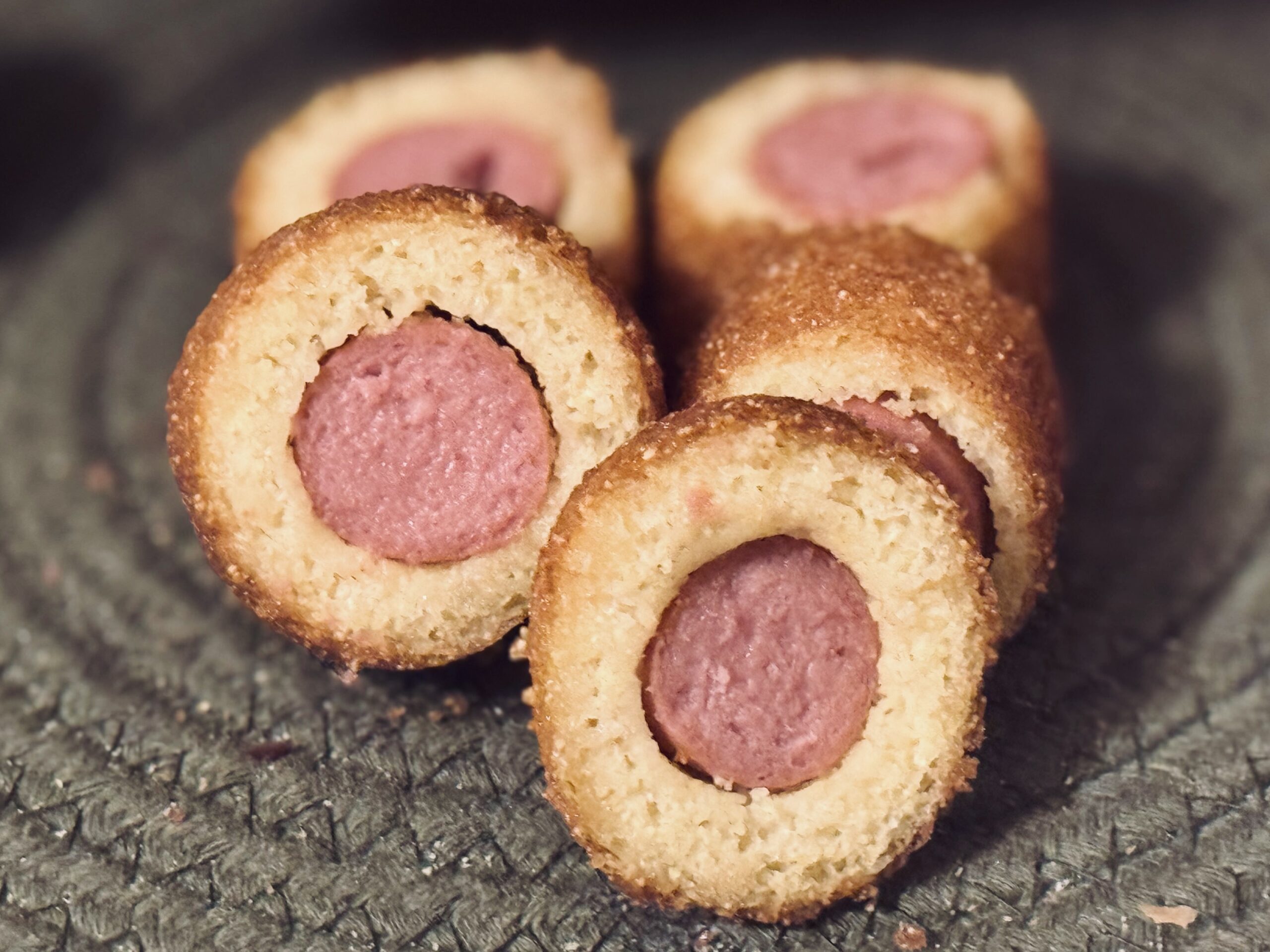
📌 Quick Tip: Read the recipe in its entirety before you start cooking. This will help you understand the ingredients, steps, and timing involved, and allow you to prepare any necessary equipment or ingredients beforehand.
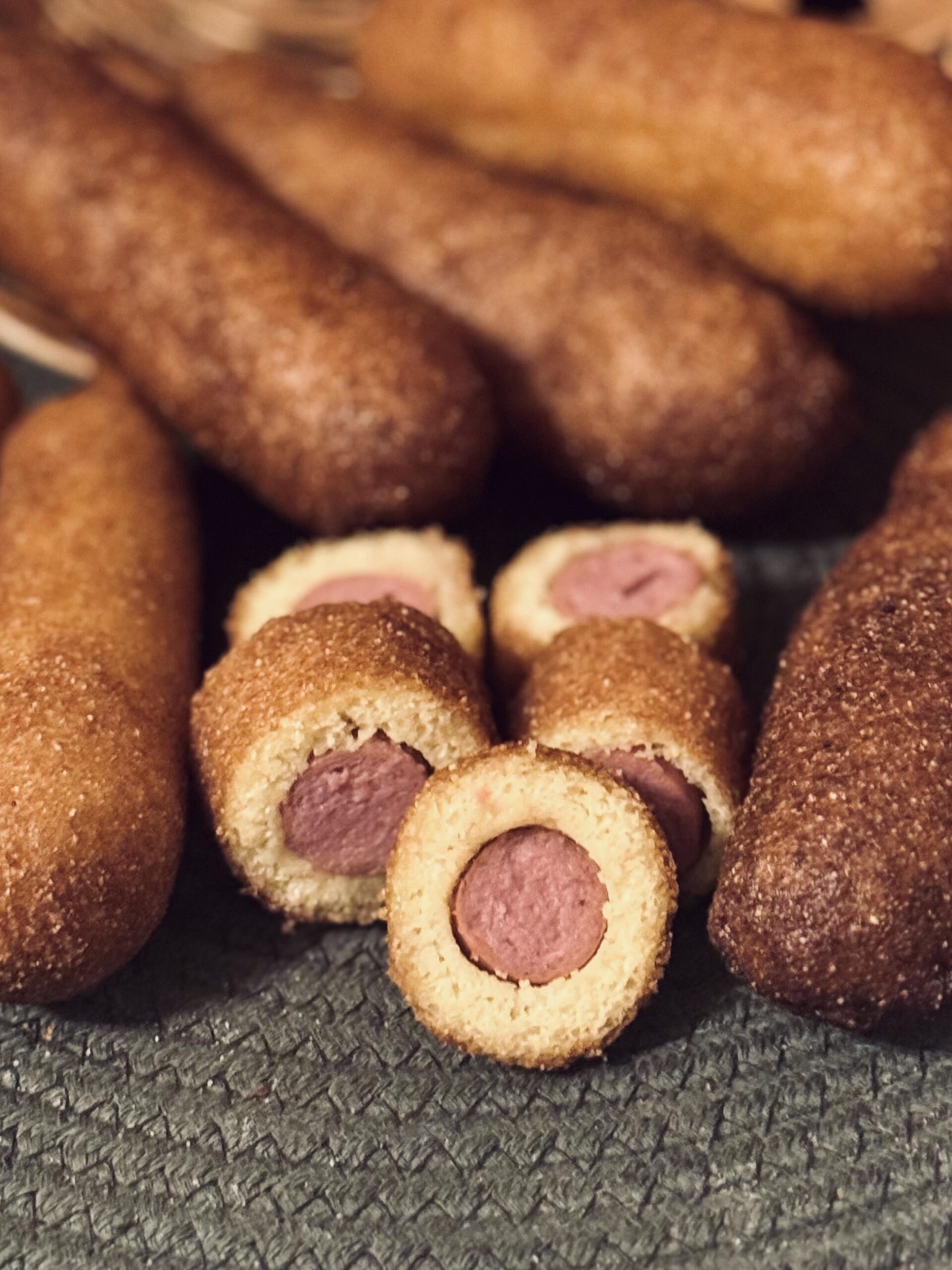
Corn Dogs
Ingredients
Dry
Wet
Other
Instructions
-
Whisk together the dry ingredients in a medium mixing bowl.
-
Add the wet ingredients and mix everything well.
It is best if the wet ingredients are still cold when adding them to the mixture, as a cold batter is better for coating the hot dogs. -
Pour the batter into a tall cup (slightly taller than the length of your hot dogs). Cover and refrigerate while you heat the oil and prepare your hot dogs.
-
Prepare the frying oil
Heat your desired frying oil in a large cast iron skillet or Dutch oven to 350 F (175 C; or a little warmer since the temperature will fall immediately when the dogs are dropped into it) over the stovetop. The oil should be 2 to 3 inches above the bottom of the skillet or Dutch oven.
-
Prepare the hot dogs
Remove your hot dogs from the package and pat dry. Optionally, coat the hot dogs with a light dusting of cornmeal. Skewer each with a popsicle stick (or any wooden stick).
-
Once the oil is heated and the hot dogs are prepared, remove the batter from the fridge.
-
Dip each hot dog into the batter, covering completely. It helps to give it a twirl in the batter, and make sure there are no air bubbles (which will cause cracks). Immediately transfer to the frying oil.
Do not let the batter touch the bottom of the skillet or Dutch oven for the first 3-4 seconds. I like to hold the battered hot dogs at an angle over the oil for this time, before dropping them in completely. -
Fry each corn dog 3-4 minutes at 350 F (175 C), until golden and cooked through.
-
Remove from oil, and allow to drain/cool on a wire rack. Enjoy fresh.
Servings 8
- Amount Per Serving
- Calories 344.6kcal
- % Daily Value *
- Total Fat 15.28g24%
- Saturated Fat 4.51g23%
- Cholesterol 64.03mg22%
- Sodium 868.03mg37%
- Potassium 159.09mg5%
- Total Carbohydrate 40.91g14%
- Dietary Fiber 1.4g6%
- Sugars 9.5g
- Protein 10.84g22%
- Vitamin A 15.65 IU
- Calcium 189.15 mg
- Iron 2.82 mg
- Vitamin D 0.22 IU
- Vitamin E 0.25 IU
- Vitamin K 0.23 mcg
- Thiamin 0.34 mg
- Riboflavin 0.3 mg
- Niacin 3.74 mg
- Vitamin B6 0.16 mg
- Folate 28.18 mcg
- Vitamin B12 0.9 mcg
- Phosphorus 323.92 mg
- Magnesium 25.28 mg
- Zinc 1.15 mg
* Nutrition values are auto-calculated and should be used as an approximation only. In addition, the values may not accurately represent the serving divisions of the recipe, instead representing the nutrition of the recipe as a whole.
Notes
- Storage: These are best eaten fresh, but will store in the fridge for three to five days or can be frozen. Reheat in a microwave for a softer consistency or in an air fryer for a crispier one.
- Sourdough discard is one of the most inaccurate ingredients to measure by volume. I kid you not when I say I get a different measurement every time. The volume of sourdough discard changes drastically depending on how old it is. Second to this, in this recipe, is cornmeal, which is best spooned and leveled when measured by volume. For best results, I recommend weighing your ingredients.
